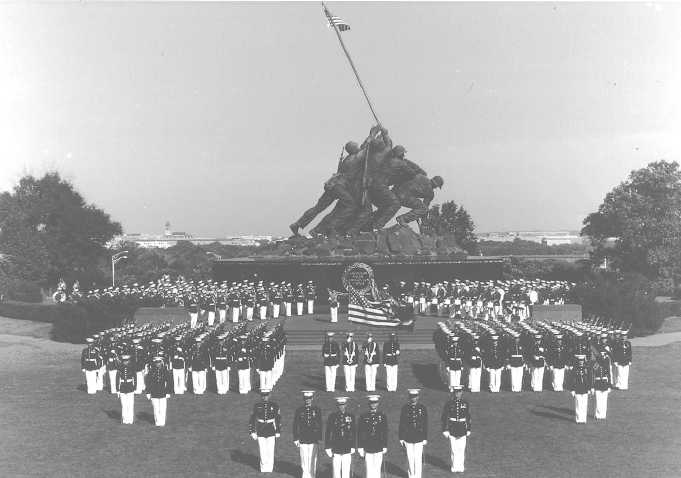| |
halted Communist expansion in the Caribbean—
the first U.S. victory ever over a Marxist state.
Battle, success, and victory have become a
tradition for the United States Marine Corps.
MARINE CORPS TRADITION
The U.S. Marine Corps, perhaps to a greater
degree than any other military service, shows the
power of pride in tradition to unify and motivate a
fighting force. Almost as soon as they become
members of the organization, marines learn that
traditions are as much a part of their equipment
as their pack or rifle. These traditions have been
growing since the Continental Marines were
organized on 10 November 1775, the birth date of
the Corps. Marine Corps tradition has many
phases: discipline, devotion to duty, leadership,
loyalty, self-sacrifice, versatility, and pride in a job
well done (fig. 14-1). Reflections of Marine Corps
tradition are found in the uniform, the insignia,
the words of the “Marines’ Hymn,” and in their
nicknames they have earned through the years.
The familiar emblem of the U.S. Marine
Corps—the eagle, globe, and anchor (fig. 14-2)—
was officially adopted in 1868. It symbolizes
worldwide service in a seagoing force—the
“soldiers of the sea.” The spread eagle holds in its
beak streamers that bear the Marine Corps motto,
Semper Fidelis (Always Faithful), officially
adopted in 1883.
The “Marines’ Hymn” originated from a verse
written by an unknown marine during the
Mexican War. This verse, “From the Halls of
Montezuma to the Shores of Tripoli,” became the
first verse of the hymn (fig. 14-3).
The Marine Corps march, “Semper Fidelis,”
was composed in 1888 by John Philip Sousa, at
that time leader of the Marine Band. The band
played for the first presidential inauguration in
134.51
Figure 14-1.-The marines of Marine Barracks 8th and I, “the oldest post of the Corps, ” on parade
at the Marine Corps War Memorial, Arlington, Virginia. Rugged in combat, U.S. Marines on
parade present the perfect example of proper military bearing.
14-2
|

